-
About
- About Listly
- Community & Support
- Howto
- Chrome Extension
- Bookmarklet
- WordPress Plugin
- Listly Premium
- Privacy
- Terms
- DMCA Copyright
- © 2010-2025 Boomy Labs
 Jodie Taylor
Jodie Taylor
Listly by Jodie Taylor
This resource collection provides an introduction to critical inquiry for creative media students.
The critical and creative functions of the mind are so interwoven that neither can be separated from the other without an essential loss to both. — Anonymous

Who is the producer/storyteller of the message?
What is their purpose/motive/agenda? (to inform, to persuade, to educate, to call to action, to entertain, to shock)
Who is the intended (primary) target audience? How do you know? Is there another (secondary) audience?
What does the message say? How does it say it?
How do you know what the message means?
What format/medium does the producer use?
What are the advantages of the format/medium?
What methods/techniques does the producer use to make the message attractive/believable?
What lifestyle is portrayed in the message? What clues tell you?
Who makes money or benefits from the message?
Who/what is left out of the message?
Whose interests are served by telling/showing the message in a particular way?
Do you agree with the message?
How might different people interpret the message differently?
What do you know; what do you NOT know; What would you like to know?
Where can you go to verify the information or get more reliable information?
What can you do with the information you have obtained from the message?
Source: © Chris Worsnop, 1999. Adapted by the author from Screening Images: Ideas for Media Education. Wright Communications, 1994. Original post at: http://www.media-awareness.ca/english/resources/educational/teaching_backgrounders/media_literacy/conceptual_framework_worsnop.cfm?RenderForPrint=1

Critical writing depends on critical reading. Most of the papers you write will involve reflection on written texts – the thinking and research that has already been done on your subject. In order to write your own analysis of this subject, you will need to do careful critical reading of sources and to use them critically to make your own argument. The judgments and interpretations you make of the texts you read are the first steps towards formulating your own approach.

From the start of modernity art began to manifest a certain dependence on theory. At that time—and even much later—art’s “need of explanation” (Kommentarbeduerftigkeit), as Arnold Gehlen characterized this hunger for theory was, in its turn, explained by the fact that modern art is “difficult”—inaccessible for the greater public. According to this view, theory plays a role of propaganda—or, rather, advertising: the theorist comes after the artwork is produced, and explains this artwork to a surprised and skeptical audience. As we know, many artists have mixed feelings about the theoretical mobilization of their own art. They are grateful to the theorist for promoting and legitimizing their work, but irritated by the fact that their art is presented to the public with a certain theoretical perspective that, as a rule, seems to the artists to be too narrow, dogmatic, even intimidating ... However, theory was never so central for art as it is now. So the question arises: Why is this the case? I would suggest that today artists need a theory to explain what they are doing—not to others, but to themselves. In this respect they are not alone. Every contemporary subject constantly asks these two questions: What has to be done? And even more importantly: How can I explain to myself what I am already doing?
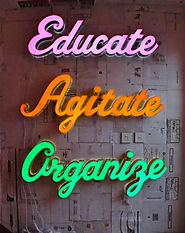
Nowadays, artists’ voices are thought to be important in giving shape to society, and art is considered to be useful. Moreover, the state, the private sector and society attribute to art a decisive political role as on the one hand, they invest in culture with the purpose generating political and economic surplus value. On the other hand, art and cultural practices are now part of the same network of strategies and questions as social movements are (this space is known as the “Infosphere”). In a context in which the creative, political, and mediatic fields are intrinsically linked, contemporary cultural practices point toward a new social order in which art has merged with life, privileging lived experience, collective communication and performative politics. In turn, the commodification of culture and its use as a resource—as well as the fusion of art, politics, and media—have had a significant impact in the way in which capitalist economies operate. A consequence has been the predominance of immaterial or cognitive labor over industrial production. Not to say that industrial production has ceased to exist, on the contrary, it has increased more than ever and for the most part it has been transferred to third-world countries. The prevalence of cognitive or immaterial work in contemporary capitalism implies that the main source of surplus value is the production and dissemination of signs. In other words,“creative’ work” has been injected to all areas of economic life. Immaterial labor also means the production of social life as lifestyles, and forms of life—a new form of the common at the center of which culture is located.

"“Critical in post-positivist design is a problem focus, the stimulation of imagination in the making of bold conjectures, attunement to the significance of provisional hypothesis formation in pushing an investigation forward, the correlative role of guided experimentation, and the capacity to discern which data in which contexts is relevant to the problem at hand. Also needed is searing and, as relevant, comparative analysis of any given theory or study, acceptance of falsification as a core criteria…a probing into alternative scenarios suggested by the data or a given hypothesis, a drive for problem resolution, and the search for truth, however provisional, as a regulative ideal.” Post-positivist Scientific Philosop
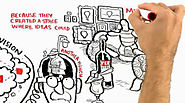
What is sociology? In broad terms, sociology is the study of society. However, this answer is often unclear or unsatisfying to an incoming class of Sociology 101 students. This clip illustrates Steven Johnson's theory of where good ideas come from, and can help explicate to students what makes the sociological perspective so unique. Instructors can begin by saying that, while most anything can be studied from a sociological perspective, some sociologists have strategically selected sites of inquiry that, at first glance, appear thoroughly individualistic in nature. This strategy is an effort to illuminate how social forces shape even the most seemingly personal of phenomena. Here, instructors can point to Émile Durkheim's study of suicide as a particularly famous disciplinary example of this (which will likely be covered later in the semester). Using a similar strategy, instructors can use the example of creativity and "good ideas" to show how social forces have a profound impact on innovation, a phenomenon that, like suicide, is often characterized as a quintessentially individual act, largely informed by psychological forces. Although some people approach creativity from a psychological viewpoint (e.g., see here), the sociological perspective can be brought into focus for students by comparing such individualistic accounts to Johnson's concept of liquid networks and his use of historical evidence to show the importance of social connectivity and collaboration for innovation. Johnson stresses the need for interconnected social spaces, organizations, and systems for the cultivation of good ideas. Johnson presents a slightly elaborated version of this argument in his TEDTalk. For other clips on The Sociological Cinema that use illustration techniques to convey theoretical arguments, click here and here. (Click the heading to be taken to the original article with active links).
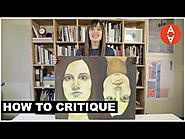
The Art Assignment youtube channel considered the conventions of art critique and explore the possibility of the internet as an arena for constructive critique. Can we do it?!

The recent matter of Sam Pepper's "social experiment" videos has inspired a lot of discussion and debate. Here at Idea Channel, we thought we'd take this opportunity to talk in this video not specifically about Sam Pepper, but about media in general, and it's ability to comment on serious social issues. If Sam Pepper's video successfully critiqued assault, then why all the uproar? If media can be potentially hurtful, then how can we best comment on social issues? Watch the episode and tell us what you think!

This Zero Books video considers Rick and Morty as a post-realist sitcom or as a cartoon version of critical theory exploring the concept of instrumental reason.
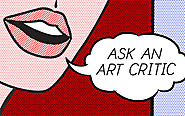
In this Philosophy Bite's podcast Noël Carroll argues that evaluation is a central feature of criticism of art, dance, music, drama, movies, and literature. He discusses art criticism with Nigel Warburton and provides insight into the fundamental role of evaluation in making critical judgements.
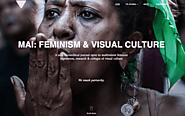
MAI: Feminism & Visual Culture is a non-hierarchical journal open to multivalent feminist expression, research and critique of visual culture and propagating feminism in today's global cultures. We publish peer-reviewed academic & creative articles.

Dr Jodie Taylor is a Senior Lecturer, Postgraduate Supervisor and Curriculum Designer. Through the lens of critical pedagogy, Jodie’s praxis-orientated approach to education is guided by the desire to help students become aesthetically inspired, media literate, culturally sensitive, critical and creative thinkers.
She is the author of Playing it Queer: Popular Music, Identity & Queer World-making (Peter Lang 2012), and co-author of Redefining Mainstream Popular Music (Routledge 2013) and The Festivalisation of Culture (Ashgate 2014). She has published more than 30 scholarly articles & chapters on popular music, gender, sexuality and ageing; queer theory, youth culture and subcultural style; and ethical relations in ethnographic fieldwork.